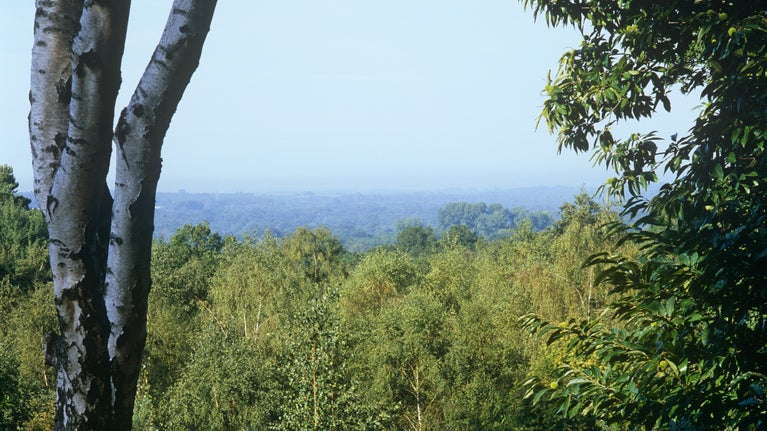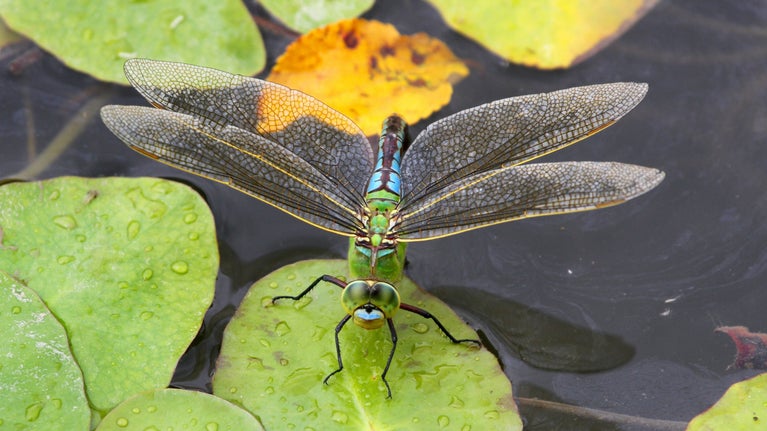Things to see and do at Simon's Wood and Finchamptead Ridges

Simon’s Wood and Finchampstead Ridges, nestled in Southern Berkshire, are a cluster of hidden gems waiting to be discovered. The Ridges itself offers far-reaching views towards the Hogsback Ridge in Surrey. Simon's Wood showcases one of the most recognisable features in the local landscape with an avenue of impressive redwood Sequoia trees (also known as Wellingtonia trees), planted in 1863.
A paradise for wildlife
Finchampstead Ridges are home to a significant area of heathland, which is a greatly declining habitat in Europe, but vital for many specialist species. If you walk slowly and quietly on a sunny day, you may be lucky enough to spot a common lizard or slow worm basking in the warmth of the sun.
Listen out for the songs of birds nesting amongst the heather or perched on the pines. Spout Pond at Finchampstead Ridges and Heath Pond at Simon’s Wood are great spots to see wildlife, particularly insects. In the warmer months, look out for butterflies, dragonflies and damselflies.
In the woodlands, look out for fungi and chestnuts in autumn, and a feast of berries on the holly and rowan trees in winter. Remember that many berries and fungi are poisonous; it’s better to look and not touch.
Butterfly Haven
The mixed woodland, heathland, and ponds at Simon's Wood and Finchampstead Ridges are ideal for butterflies between Spring and Summer. Its diverse range of foodplants make it an ideal breeding ground - purple moor grass for the Large Skipper, nettles for the Peacocks and Small Tortoiseshells, and unsurprisingly, holly for the Holly Blue.
The first species of the year normally appear around March. Butterflies are a welcome sight, indicating warmer weather and sunnier days. These early appearances usually come from Brimstones, Peacocks, Tortoiseshells, and Commas – the adults of these species hibernate here through the winter and emerge as soon as the weather is warm enough. In April, visitors might spot Orange Tips, Small Whites, and Speckled woods, and in May, Small Coppers and Small Heaths can be found enjoying the open heathland.
As summer progresses, species such as the Large Skipper start to emerge amongst the long grasses. Keep an eye out along the scrubby edges between the woods and the heath for all the different species through to October, although the occasional Red Admiral may be seen as late as November.

Dragonflies and damselflies
Each year between May and September, the ponds and heathland of Simon’s Wood and Finchampstead Ridges come alive as large numbers of damselflies and dragonflies dart around the sunlight. There are several good places to spot them. The best time to look for them is on a sunny day, as this is when they will be most active.
Heath Pool is where you will get the best views of dragonflies as they dart across the pool hunting insects. If you are lucky you may spot a pair mating, or a female laying her eggs on the surface of the water. Emperor, Common Darter, and Downy Emerald are among the species that can be found here.
For damselflies one of the best spots is at Spout Pond, where Common Blue and Large Red damselflies can be seen perched on the vegetation or dancing across the surface of the water.
The heathland is also great habitat for dragonflies and damselflies, especially where there are boggy areas with standing water. One of the rarest species to be found at Simon’s Wood, the Small Red Damselfly has been recorded at these important boggy ponds.
Hidden history
You can also see the remains of an early Roman Road from London to Silchester, believed to date back to the second century and now nicknamed the Devil’s Highway. Take a walk up Ambarrow Hill to find an intriguing mound – what do you think caused it? There are several theories, although archaeologists have been unable to confirm its cause.
You might also be interested in

Simon's Wood trail
Explore Simon's Wood wet woodland and lowland heath habitats, providing an increasingly rare habitat for many birds and invertebrates. An easy level walk great for little legs.

Oxfordshire, Buckinghamshire and Berkshire
Discover rolling hills, grand mansions, intimate homes and glorious countryside. Where will you explore?